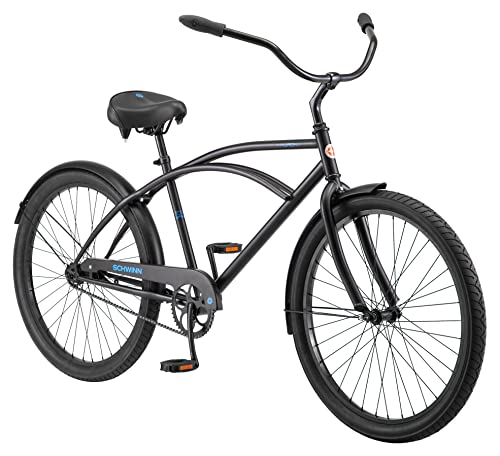Sounds like you've got the problem solved but though i'd share. You basically have four adjustments for shifing duties. Cable tension, lower limit and upper limit screws and chain wrap. Rarely is chain wrap an issue, its th screw that allows the deraleur to swing forwar and rearward, the adjustment screw is loated on the backside of the deraleur where is mates with the hanger (on the frame).
There are two small screws on the back of the deraleur, marked L & H. These are the screws that limit the lateral travel of the deraleur. "H" is the high gear / outer gear limiter (small cog, say "Houter" to represent the outer cogs), and "L" is the low gear limit (near the spokes , say "Linner" to represent the inner gogs).
On initial new bike set up or new cable installs i do the following. Put the bike in a stand or find some way to support it off its wheels.
With the bike (let's assume a mountain bike with a tripple front), shift into the middle ring front and small cog in the rear.
Screw the cable micro tensioners all the way in, then turn them back out 2-3 turns. There should be one of these on the deraleur and possibly one on the shifter (low end bikes may not have a micro adjuster on the shifter).
Install the cable and housing (no need to put any more than finger tension on the cable at this time). All your housing lengths should allow for easy curves and full handle bar travel. No kinks at the cable guides, shifter or deraleur. Couple of drops of lube in the housing is all you need. Trim the cable at 2"-3" at the deraleur. Make sure your housing cuts are clean, sometimes the metal coil stuff can bend over and interfere with smooth cable travel, you can snip it off with a pair of electrical wire snips, flat file or carefully use a grinding wheel.
While turning the cranks, grab and pull on the rear shift cable so the bike shifts to the low gear (big cog). Once it has upshifted you can stop pedaling. Pull hard (but don't kill it) 3 or four times on the cable, this will help seat the housing into the guides. Re-tension the cable at the deraleur to take up the slack.
Now, while turning the cranks, try shifting up and down (rear) just the first couple of gears.
* If there is hesitation shifting up to larger cogs, then the cable is slack. Using 1/4 turns, take up tension until you have a nice crisp upshift. If there is heistation shifting to smaller gogs, there is too much tension, so let it out by 1/4 turns.
Now that you have good shifing you can mess with the limit screws. Turn in the "H" screw by 1/4 or 1/8th turns and keep shifting down into that small cog. when the downshifting starts to hang up its time to back it out a little. You may need to fine tune the cable tension if you have to make big changes to the "H" screw.
Now shift to the big front ring and try the rear outer gears again. make adjustments as necessary.
Now shift to the small front ring and go through the same process with the large rear gogs using the "L" screw to limit the rear deraleur travel.
Please note: I grew up without "idiot lights" AKA gear indicators so i probably have my high gear, low gear comments all mixed up but i can tune up a bike just the same. When i say downshifting, the mechanical engineer in me visualizes the chain moving down the cogs, larger to smaller. However if you think if it like you would shifting a car or motorcycle, you would be downshifting to slow down not speed up.

Poe-Tay-Toe, Po-Tat-To, confused yet.
Now if all else fails and you just cant get it to shift well there could be several other issues at play:
1. Shifter indents are worn out (very common with grip shift as the metal spring will wear on the plastic notches.
2. The deraleur piviots are worn out.
3. Excessive drivetrain wear, chain or cogs.
4. The deraleur hanger is bent. you can try and eyeball it but proper alignment really takes the tool.
5. The bike has an 8 speed cascette and a 7 speed shifter (just went through this last weekend).






























































